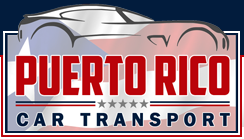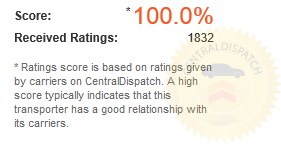Traffic sign translations
Quick tips
Conclusion

Traffic sign translations
You are likely already aware of this, but the primary language spoken in Puerto Rico is Spanish. In fact, even though English is considered one of the official languages along with Spanish, ninety five percent of the population uses Spanish in everyday life. As a result, all of the traffic signs are in Spanish too. You’ll need to be able to read these signs if you want to have the safest and easiest driving experience possible after shipping your car to Puerto Rico.
You might be able to decipher what a sign means by the actual design. For example, a “Do Not Enter” sign looks exactly the same as it does in the United States, except for the wording of “No Entre”. Either way though, it can only help to know the following when you are out on the road in Puerto Rico:
autopista — highway / expressway
calle — street
carratera — road
carril derecho — right lane
carril izquierda — left lane
ceda — yield
cuidado — caution
estacióne — parking
este — east
hacia — toward
interseción — junction – can also frequently be see abbreviated as INT
no estacióne — no parking – a large letter “E” with a slash through it also means “no parking”
norte — north
oeste — west
pare — stop
peaje — toll
salida — exit
solo — only
sur — south
transito — You will see this word accompanied by an arrow. This tells you whether traffic flow is one-way or both ways on a road.
Quick tips
- Gasoline is priced by the liter. A liter is a little more than a quarter of a gallon. If you know you need to pump gas and you need ten gallons, you will need to pump just under forty liters. Before you pump your gas, you will need to pay. So, enter the store and pay the clerk for however many liters you need. Thankfully, the currency is the US dollar, so you won’t need to do any conversions there.
- If you are using the road signs to keep track of the distance to a location, be aware that these distances will be in kilometers, not miles. One kilometer is between half and three quarters of a mile. Ten kilometers is just over six miles.
- Try not to look for parking in densely populated city areas. It’s almost never available on the street. Instead look for parking garages and decks where you can pay to keep your car for a few hours or for the day.
- Do not use lanes marked with a “T” because those are for AutoExpreso tag holders only. If you do use these lanes without the AutoExpreso tag, you will be fined. This is essentially the Puerto Rican version of EZ-Pass. If you are moving to Puerto Rico, it would make sense to get one of these tags, so you can use those lanes. You can find out more information here.
Conclusion
Driving in Puerto Rico can seem very confusing and frustrating at times. This is mainly because most people there accept driving laws merely as suggestions instead of hard rules and drive as such. There isn’t much you can do about that either except to be aware of it and be on the lookout.
However, you can make your life easier by knowing the traffic signs and how to read them. A little bit of study will go a long way for improving your driving experience in Puerto Rico.
You have enough to worry about with your Puerto Rican move or excursion, let us worry about the auto transport for you – call us today at 904-322-7644!


